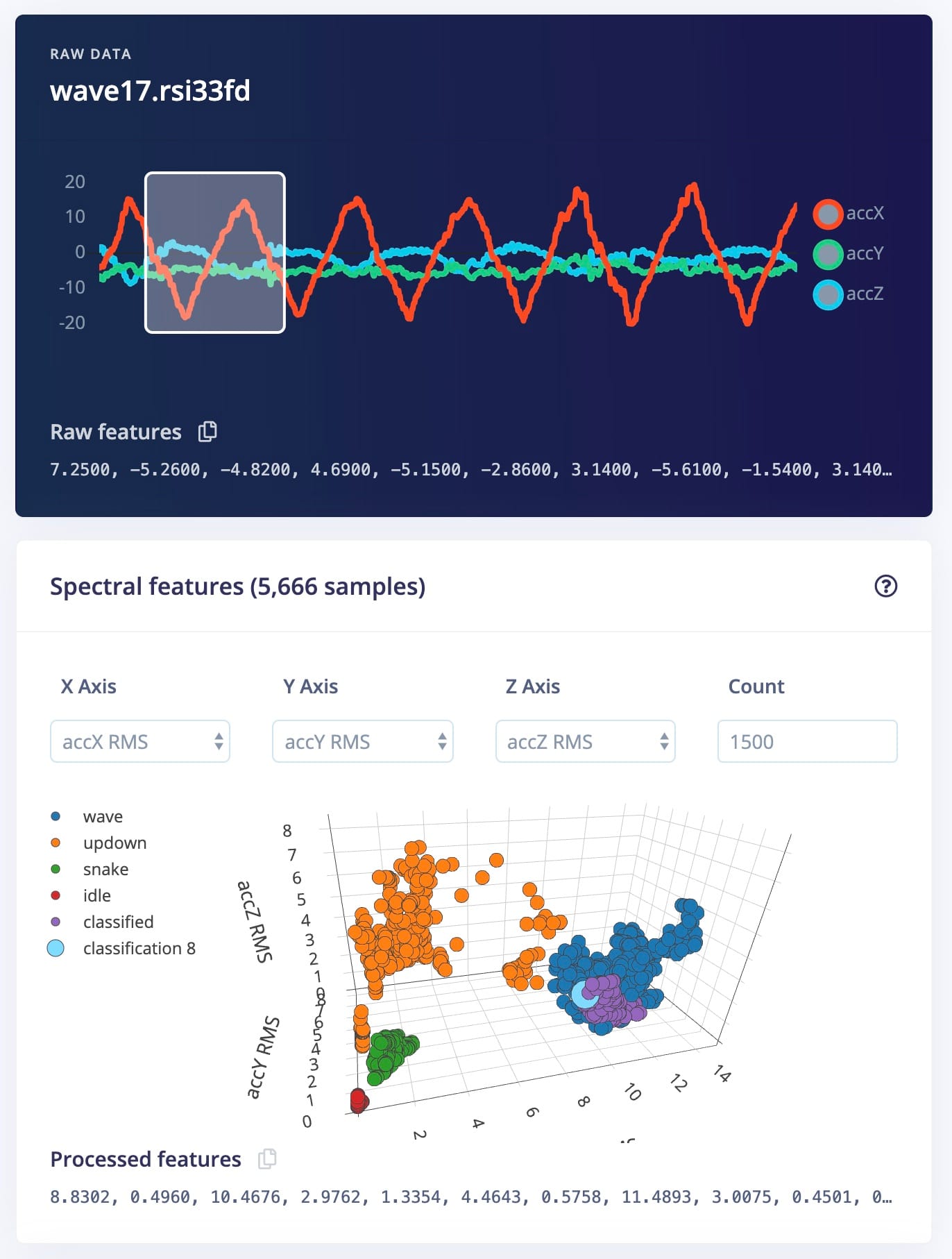Simplifying Machine learning In Connected Devices
As organizations gain an understanding of the benefits of combining data with the power of AI and machine learning, IoT service providers have been leveraging advances in these technologies to provide faster analysis, more accurate results, cost savings, and increased security.
Our Michigan based IoT software development company, SpinDance, and Edge Impulse, the leading provider of embedded machine learning technology, have recently partnered to allow for the simplification of embedding machine learning technologies into existing smart devices and newly manufactured IoT products.
The partnership makes us the first Edge Impulse Solution Partner in the United States using the Edge Impulse platform to create and optimize machine learning models specifically for running on edge devices. Using the platform provides our experienced engineering team additional tools to bring machine learning to reality for our clients with positive impacts on the bottom line. We believe that combining this technology with SpinDance’s holistic, full-stack approach that has been part of our practice in software development for over twenty years will create powerful new opportunities for our clients.
Applications for Machine learning in IoT
Use cases span a variety of industries, products, and applications. Advances are rapidly being made in areas such as agricultural, consumer, medical, and industrial spaces. One of the reasons for this is the ability of IoT devices to process sensor data like vibration, audio, vision, temperature, humidity, etc. in real-time to provide insights where and when they are needed.
In many cases today, IoT devices will collect the data, send it to the cloud, make machine learning inferences in the cloud, and then send the data back to the device. While this may be the right solution in some cases, it can be prohibitively slow, unreliable, costly, and/or present security concerns. The power of embedded machine learning is that it enables us to have the model run on the device which eliminates many of these obstacles. It minimizes battery consumption by massively reducing data communication needs and enables completely new applications for devices on low-bandwidth networks such as LPWAN or satellite. It can save costs on data transfers to the cloud and the power usage related to making these transfers. Depending on network latency and infrastructure design, we have seen latency reduced from a 1-second round-trip on inference to under 50ms. This can be a complete game-changer in time-critical applications. Also, distributing this processing load across devices in the field can save thousands of dollars in cloud computing and transfer costs. In the IoT space, data security is always something we need to be very cognizant of. If we can keep sensitive data on the device rather than sending it out, we reduce the security risks that inherently come with multiple network data transfers.
One simple example of the power of audio data and machine learning is with appliances. When the human brain hears unique sounds coming from an appliance it can promptly detect an issue, like a bearing going bad, a motor that is struggling, something out of balance, or a filter being clogged.
During a hot summer, my family enjoys the relief that a window air conditioner unit brings to our home. Living around a lot of trees means that debris can easily clog the drain in a window unit causing water to back up and spray around inside the unit. One day while sitting at my dinner table I heard a noise from the air conditioner - the likely sound of a clogged drain hole. Fortunately, I was home to unclog it and forgo possible damage to the unit. If I wasn’t home, wouldn’t it be better if the appliance was smart enough to know to shut off or at least notify me that there is a problem? This situation could be addressed with a water sensor, however, those come with their problems such as dealing with rain outside. I decided to test a theory that Edge Impulse could enable creating a solution for a smart air conditioner just using audio. Using Edge Impulses data collection API, I quickly built a small data set of three air conditioner states: Off, Normal, and Clogged. Within an hour, I had a model trained that was able to detect these differences with 95.5% accuracy. Without the platform, this model would’ve taken me several days to build.
I find that Edge Impulse reduces the time developers spend on the busy work of machine learning and allows them to focus their time on adding greater value to the project.

Streamlining Development for Better Business Outcomes
Advances in AI and machine learning technologies give companies the ability to gather, analyze, and leverage data to utilize for business advantages. This data can have impactful business outcomes including enhanced customer experiences. When coupled with streamlined IoT development in connected devices the potential to increase revenue can be significant.
Want to explore how to embed machine learning into your connected device(s)?
Contact SpinDance for a technical discovery session.
